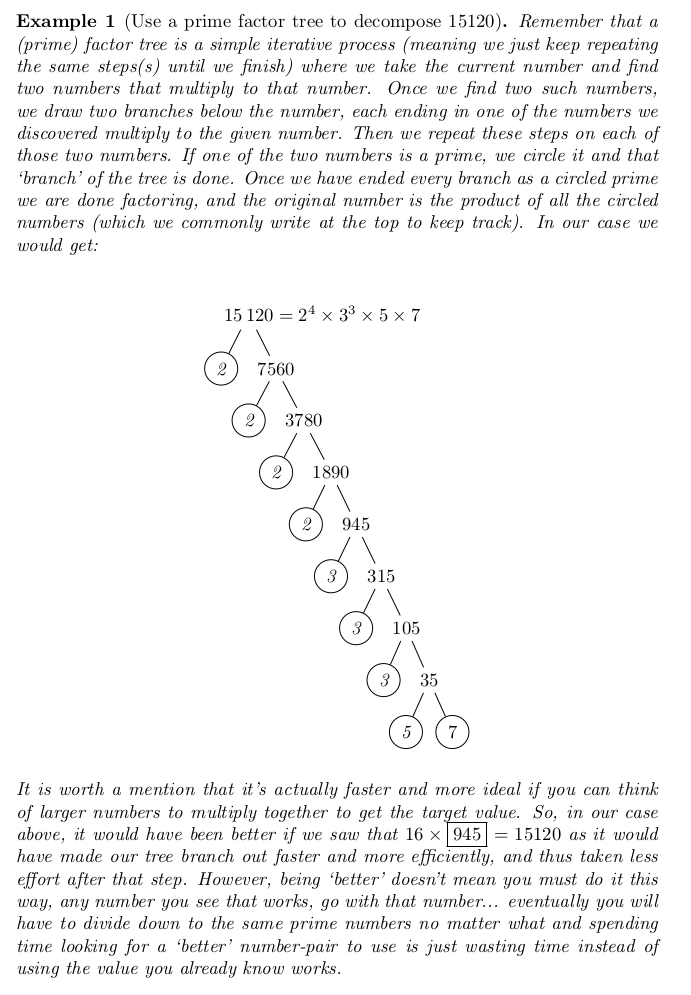This section introduces radicals and some common uses for them.
Simplifying Numeric Radicals
First we revisit a numeric factorization tool that you may (or may not) have learned quite some time ago, called a prime factor tree. This will be supremely helpful in determining the prime factors of any given number, which is necessary for simplifying a numeric radical.
We use the following steps to simplify any numeric radical:
- 1
- Use a prime factor decomposition tree (aka a ‘prime factor tree’) to find all the prime factors.
For example, if our radicand is we would write .
- 2
- Write out the radicand in its prime-factor form. Optionally, you can also write the root value to make it clear.
For our example we would write .
- 3
- Rewrite each prime factor as the largest multiple of the root possible, and then a separate factor with the remainder.
In our example we have . This is because the root value is so we want to group factors in pairs; hence we have (which we simply write as , but you can write it out the long way if you want), which leaves as the remainder).
- 4
- Pull out the groups that were identified in the previous step, leaving the remainder terms. When pulling out the
groups you identified in the last step, divide each power by the root-value (this should divide evenly due to how we
made the groups in the previous step) and multiply it as a coefficient to the root.
In our example we have:
= - 5
- Finally; simplify all the resulting numbers and merge them into single values.
In our example we have:
Let’s consider another example; simplifying . This may seem intimidating at first, but the key here is to use the prime factor tree to decompose the large number into a product of smaller numbers. Let’s revisit how to do this before we continue.

Now that we have the prime factorization we can continue to our example.
Simplify the numeric root:
Since we have already determined the prime factorization, we will write out our radical with the radicand in the factored
form: As before, we want to group these terms as each factor to the root level ( in this case) with remainders.
Specifically we have and , and the and are both left alone (since they have powers less than to start with).
So we would write; Then, pulling out the pieces that are grouped we get: And, finally we can simplify we get:
And so we have our final simplified expression and we conclude: